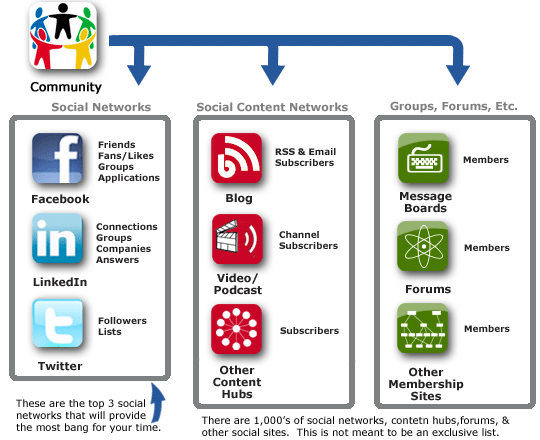Community is a strategy but also a mindset. It requires participation and some best practices. Most, importantly it requires an alignment of your goals and what your target audience wants in a social community approach.
Discover some best practices and behaviors enabling community building and growth that apply whether you want to build and nurture a community or participate in other ones (we advise to do both). You will notice (content) marketing plays a role in many aspects but it’s certainly not enough.
What matters most of all is relevance and utter customer-centricity with a focus on realizing goals of community members and the (business) reason why the community was “set up” (better: brought together) in the first place.
Some community tips and basics
- Community first. As users of social media we should think about the needs of the community we build or participate in first. Rather than thinking of all the ways to communicate to people how important we are, we need to give the community what its members want. This is an essential first step in building community.
- Interaction and participation are key. It’s also important to remember that social media is not a one-way street. The key word here is “social,” meaning that there must be interaction. The savvy social networker creates opportunities for people to interact and responds to them as well. Community participation should be encouraged.
- Quality over quantity. More than ever now, people receive an overwhelming stream of information, and those who pass everything on without regard for quality will quickly get ignored. Those who become a reliable source of the best content, filtering and sorting for the benefits of their communities (content marketing), will find those audiences growing and relying upon them for expertise. They will become what we called thought leaders, practice leaders or trusted advisors.
- Feedback. It’s important to pass on positive feedback from people within the community. This isn’t the same thing as telling an audience that one is important; it’s letting an audience know how valuable others consider one to be.
- What’s in it for them? Why do you want people to join your community and be active in it? Why do you join an existing community to reach out to others? What’s in it for them? Original content that the community can turn into concrete action is often crucial: answers, tips, exclusive video, networking opportunities, etc. It’s not enough to present information. Great content needs to persuade the audience to take action. A sense of value and exclusivity strengthens the community as well. The stronger we want the relationships to be, the more we have to focus on exclusivity and value. This is certainly the case for communities of loyal customers.


